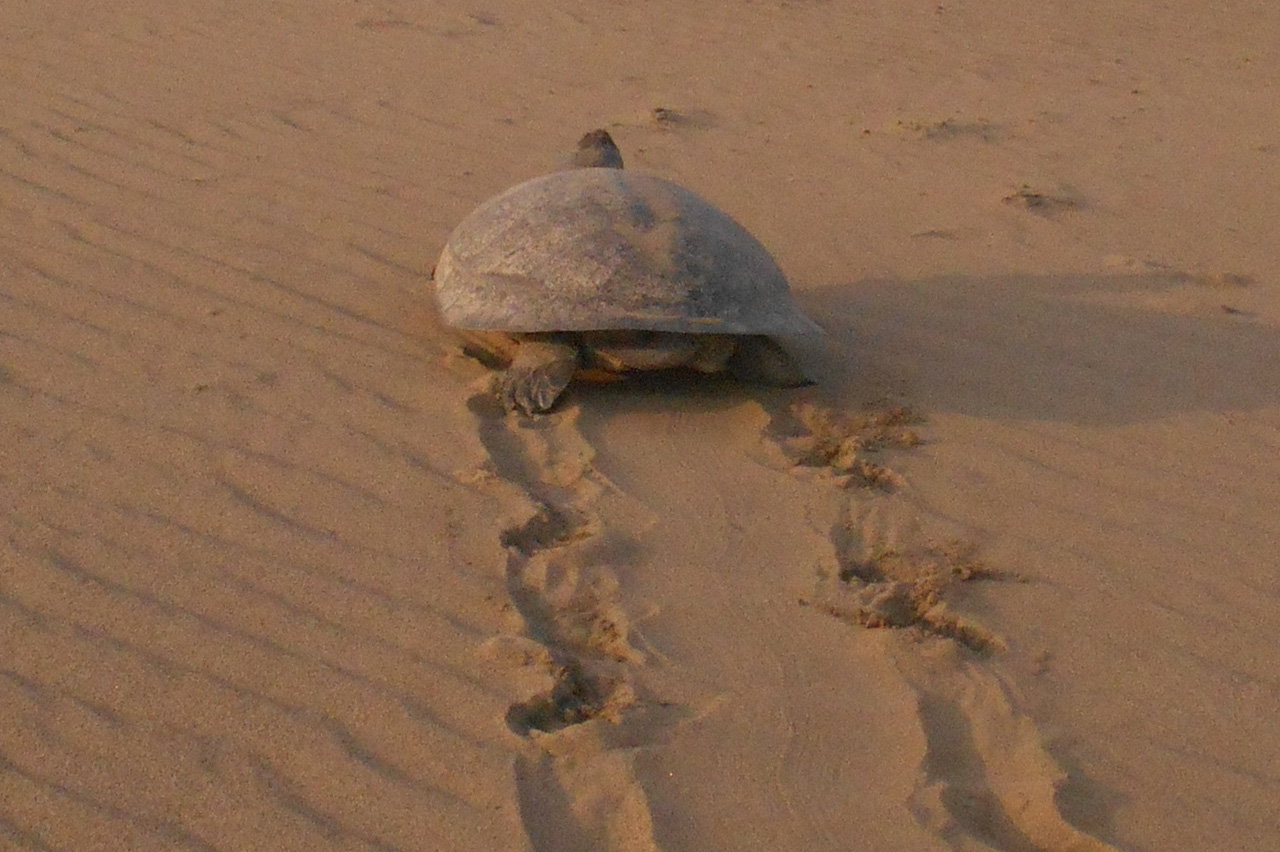The South America river turtle is a freshwater turtle found in the departments of Amazonas, Arauca, Caquetá, Casanare, Guainía, Meta, Putumayo, Vaupés, and Vichada.
It inhabits large rivers such as the Orinoco and the Amazon. As a juvenile, it is omnivorous, feeding on stems, leaves, and invertebrates. As an adult, it becomes herbivorous, playing an important role in seed dispersal.
It engages in mass nesting during the dry season, when the river level drops and exposes the beaches, typically between December and April.
 Photo: Jhon Gaitán / WCS Colombia
Photo: Jhon Gaitán / WCS Colombia
During this season, a single turtle can lay more than 100 eggs, though the average clutch size in Colombia is around 80 eggs per nest.
It is classified as Critically Endangered (CR) according to the International Union for Conservation of Nature (IUCN).
The WCS Continental Turtle Project works in collaboration with the Proyecto Vida Silvestre (PVS) to protect this species, particularly in the rural area of Cravo Norte (Arauca), specifically in the village of La Virgen. Through conservation agreements and community empowerment, an annual monitoring of the reproductive period of adult females is carried out to protect their nests and ensure the successful hatching of hatchlings. This takes place between January and April, a period of low rainfall in the region.
Traslated with AI support